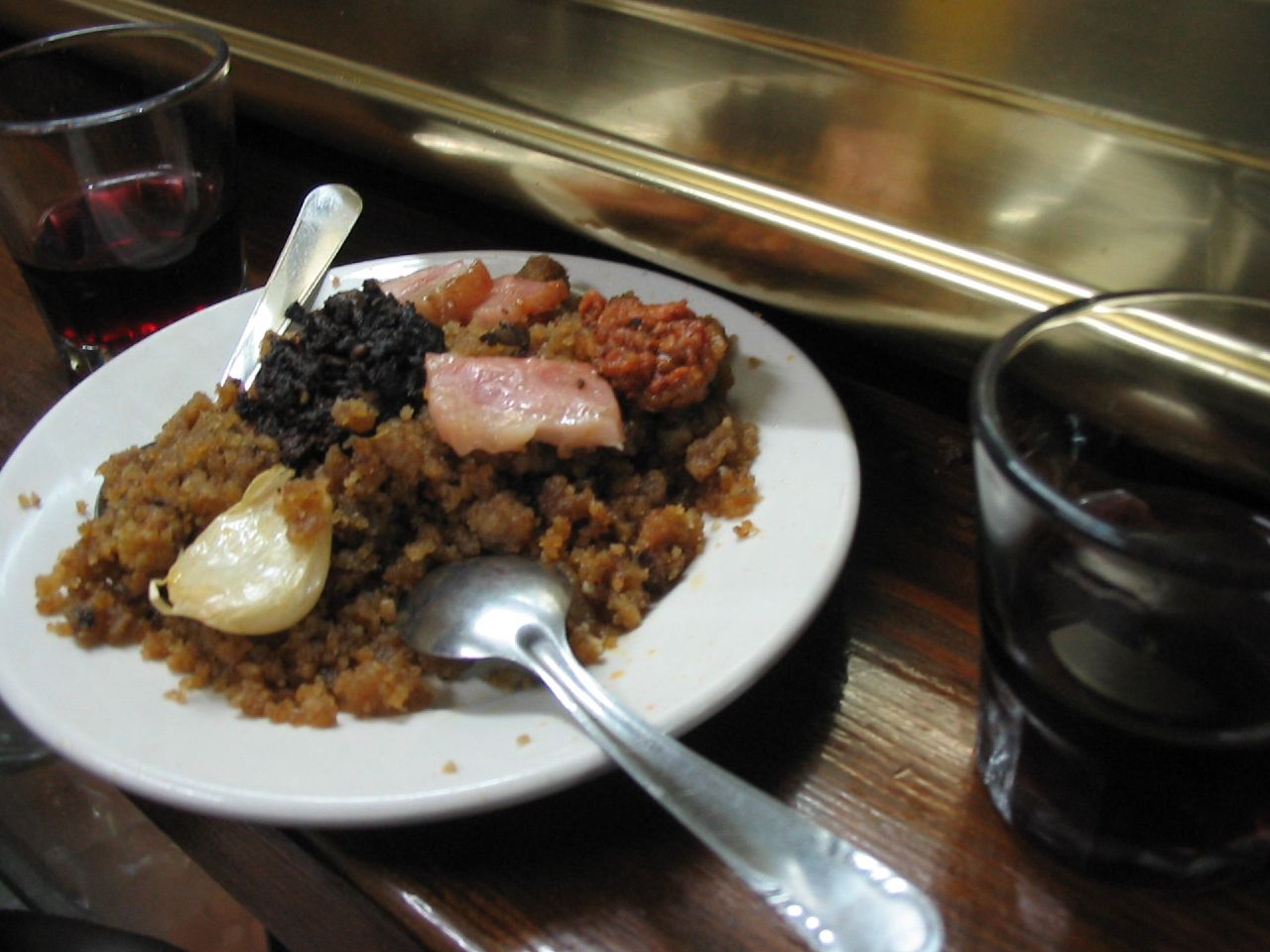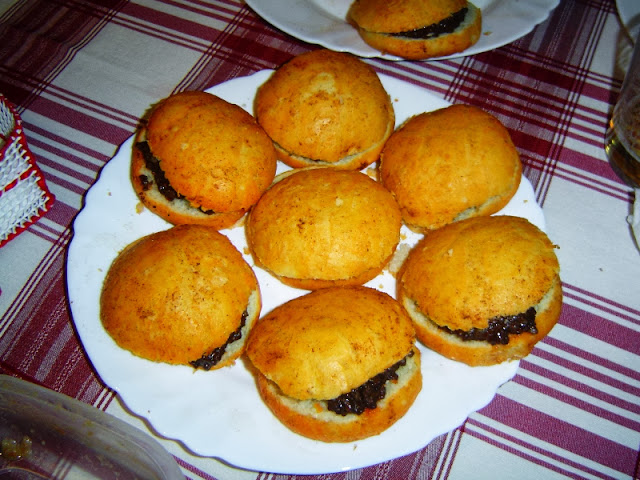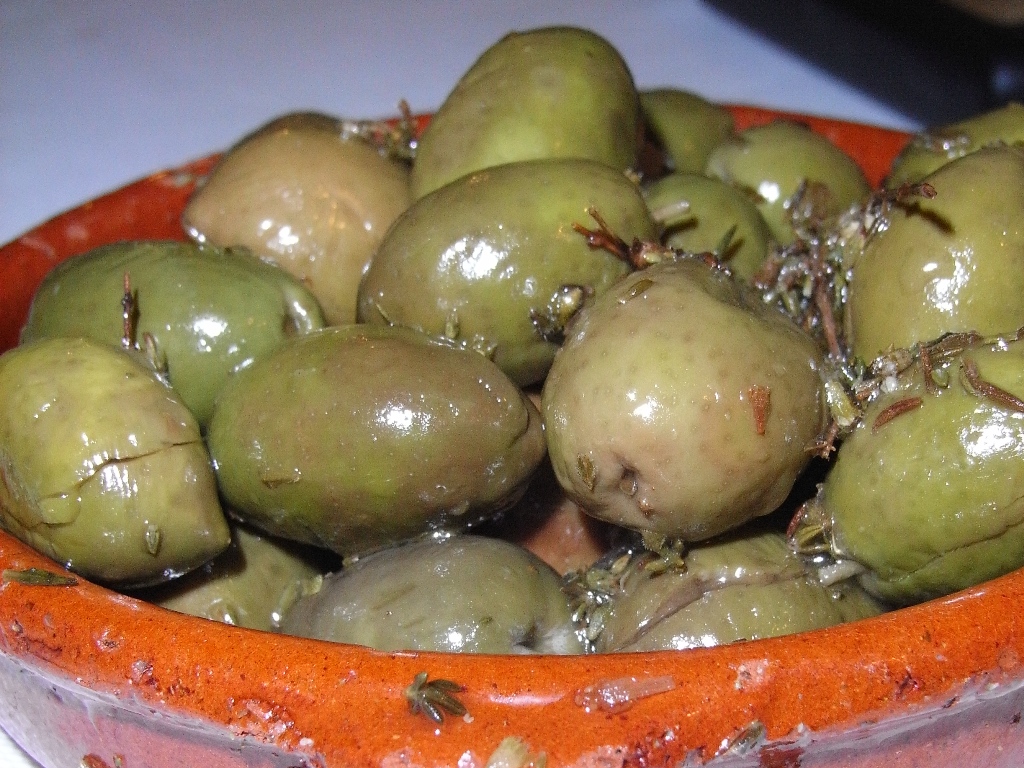The Food I Miss From Jaén Province, Spain
I have to admit, I’m extremely spoiled getting to live in Galicia, the Spanish region with perhaps the best food in the whole country. From fresh, affordable seafood to a variety of cheeses and sausages and even tasty almond cakes, my stomach is certainly satisfied with my decision to move up north this year.
However, while living down south last year in the Andalusian province of Jaén, I grew very fond of several traditional dishes and snacks, some unique to the area and others shared across the south. If you’re ever passing through Jaén, make sure to try some of these for me when you stop for a bite to eat, because I miss them a lot!
Lomo de orza or pork loin confit takes its name from the large clay jars—orzas—it was traditionally preserved in (it’s pronounced “LO-mo day OR-thah” [ˈlo.mo de ˈoɾ.θa]). Before refrigeration was invented, people would buy cuts of pork after the annual pig slaughter, cook them, place them in clay pots, and cover them with olive oil. Doing so would keep bacteria out for months at a time. Today, this tender, flavorful meat is still a popular dish to order for tapas or bring to a family potluck dinner.
To prepare the lomo, cooks first marinate the meat in herbs and spices for two days before they slow-boil (fry?) the meat in olive oil for a couple hours. Once it’s cooked, it’s put into a glass jar (doesn’t have to be a clay orza) and filled with plenty of olive oil. You can find recipes (in Spanish) here and here.
When I first showed up at my hotel in Úbeda, jetlagged and travel-weary, I asked the server at the hotel’s restaurant what she recommended as really typical, local dishes. She told me to try a town specialty: andrajos (“ahn-DRAH-khoes” [anˈdɾa.xos]), a greenish meat-and-veggie stew. It was the perfect comfort food after a long 24 hours of travel to Spain and made for a warm welcome to my new home for the year. The name andrajos refers to the “rag”-shaped pasta cooked with everything else.
The stew includes a vegetable base that contains a lot of the basic ingredients for paella—garlic, onion, tomato, peppers, and artichokes. You can add all sorts of meat to the tasty broth, including clams, shrimp, cod, and rabbit. Check out two Spanish-language recipes here and here.
Carb-lovers rejoice! Migas are fried breadcrumbs eaten across much of Spain, usually incorporating some combination of garlic, peppers, tomatoes, and sausages. Stale bread is ground up and fried in olive oil with whole, skin-on garlic cloves to make a delicious, crumbly tapa or starter.
Ochíos are anise-and-olive-oil-flavored bread rolls glazed with an orange mixture of olive oil, salt, and smoked paprika. Although they can be eaten on their own or like a sandwich with meat or cheese, you’ll almost always find them sliced in half and filled with morcilla en caldera (see below). Pronounced “oh-CHEE-ohs” [oˈtʃi.os], these little guys are exclusively made in bakeries of La Loma county, which includes the cities of Úbeda, Baeza, Sabiote, and Torreperogil. Check out this lovely Spanish recipe for it here.
Of all the foods I’ve listed in this post, this one might sound the grossest: blood pudding pâté. However, just think of it as the spiced filling that would normally go into a blood sausage link, mixed with onions and pine nuts. Deeply flavorful, it tastes even better when paired with the aforementioned ochío rolls. You can buy it in most supermarkets in Jaén, but the experience of receiving it at a restaurant in a warm clay cazuela surrounded by little orange ochíos is 100% typical Úbeda.
Olives are part and parcel of the identity of Jaén, which produces a third of Spain’s olive oil and a tenth of the world’s. It’s only natural, then, that olives would be one of the province’s most typical snacks. Once they’re edible after being soaked in lye, brine, or salt, olives are commonly left to marinate (and tenderize) in a fragrant, delightful mixture of herbs, spices, vinegar, and olive oil. Usually, you’ll receive aceitunas aliñadas as a free tapa with your drink order, although it will rarely be the only free tapa you get. (Side note: olives are NEVER served pitted in Spain, as removing the pit weakens the flavor.)
Have you ever tried any of these before? Does anything sound appetizing…at all? Tell me in the comments below!
However, while living down south last year in the Andalusian province of Jaén, I grew very fond of several traditional dishes and snacks, some unique to the area and others shared across the south. If you’re ever passing through Jaén, make sure to try some of these for me when you stop for a bite to eat, because I miss them a lot!
1) Lomo de orza
 |
| (Source: JJ Merelo) |
Lomo de orza or pork loin confit takes its name from the large clay jars—orzas—it was traditionally preserved in (it’s pronounced “LO-mo day OR-thah” [ˈlo.mo de ˈoɾ.θa]). Before refrigeration was invented, people would buy cuts of pork after the annual pig slaughter, cook them, place them in clay pots, and cover them with olive oil. Doing so would keep bacteria out for months at a time. Today, this tender, flavorful meat is still a popular dish to order for tapas or bring to a family potluck dinner.
To prepare the lomo, cooks first marinate the meat in herbs and spices for two days before they slow-boil (fry?) the meat in olive oil for a couple hours. Once it’s cooked, it’s put into a glass jar (doesn’t have to be a clay orza) and filled with plenty of olive oil. You can find recipes (in Spanish) here and here.
2) Andrajos
When I first showed up at my hotel in Úbeda, jetlagged and travel-weary, I asked the server at the hotel’s restaurant what she recommended as really typical, local dishes. She told me to try a town specialty: andrajos (“ahn-DRAH-khoes” [anˈdɾa.xos]), a greenish meat-and-veggie stew. It was the perfect comfort food after a long 24 hours of travel to Spain and made for a warm welcome to my new home for the year. The name andrajos refers to the “rag”-shaped pasta cooked with everything else.
The stew includes a vegetable base that contains a lot of the basic ingredients for paella—garlic, onion, tomato, peppers, and artichokes. You can add all sorts of meat to the tasty broth, including clams, shrimp, cod, and rabbit. Check out two Spanish-language recipes here and here.
3) Migas
 |
| (Source: Juan Fernández) |
Carb-lovers rejoice! Migas are fried breadcrumbs eaten across much of Spain, usually incorporating some combination of garlic, peppers, tomatoes, and sausages. Stale bread is ground up and fried in olive oil with whole, skin-on garlic cloves to make a delicious, crumbly tapa or starter.
4) Ochíos
 |
| (Source: Wikipedia) |
Ochíos are anise-and-olive-oil-flavored bread rolls glazed with an orange mixture of olive oil, salt, and smoked paprika. Although they can be eaten on their own or like a sandwich with meat or cheese, you’ll almost always find them sliced in half and filled with morcilla en caldera (see below). Pronounced “oh-CHEE-ohs” [oˈtʃi.os], these little guys are exclusively made in bakeries of La Loma county, which includes the cities of Úbeda, Baeza, Sabiote, and Torreperogil. Check out this lovely Spanish recipe for it here.
5) Morcilla en caldera
Of all the foods I’ve listed in this post, this one might sound the grossest: blood pudding pâté. However, just think of it as the spiced filling that would normally go into a blood sausage link, mixed with onions and pine nuts. Deeply flavorful, it tastes even better when paired with the aforementioned ochío rolls. You can buy it in most supermarkets in Jaén, but the experience of receiving it at a restaurant in a warm clay cazuela surrounded by little orange ochíos is 100% typical Úbeda.
6) Marinated olives
 |
| (Source: Javier Lastras) |
Olives are part and parcel of the identity of Jaén, which produces a third of Spain’s olive oil and a tenth of the world’s. It’s only natural, then, that olives would be one of the province’s most typical snacks. Once they’re edible after being soaked in lye, brine, or salt, olives are commonly left to marinate (and tenderize) in a fragrant, delightful mixture of herbs, spices, vinegar, and olive oil. Usually, you’ll receive aceitunas aliñadas as a free tapa with your drink order, although it will rarely be the only free tapa you get. (Side note: olives are NEVER served pitted in Spain, as removing the pit weakens the flavor.)
Have you ever tried any of these before? Does anything sound appetizing…at all? Tell me in the comments below!
